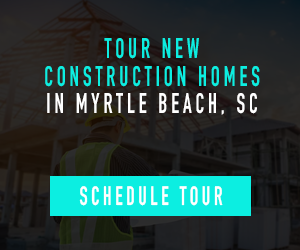
Flexibility is essential in today’s rapidly evolving digital landscape. A headless CMS gives businesses the ability to structure content in any way they desire. With custom content modeling, companies can determine how best to redefine their intentions efficiency, consistency, and scalability. This article guides you through successfully implementing custom content models within a headless CMS.
Understanding the Importance of Custom Content Models
Custom content models dictate how your content is structured, stored, and delivered via APIs in a headless CMS. While conventional CMSs provide a one-size-fits-all solution with a front-end/back-end that cannot be separated, headless CMSs implement a detachment between the content creation process and any subsequent delivery systems for which the organization sees fit, creating an opportunity for custom content types that reflect the unique advancements of your organization.
Therefore, custom models create consistency and enhanced content management operations and simplified publishing efforts across various channels, which bolster content flexibility and workflow efficiency.
Identifying and Analyzing Your Content Needs
Prior to custom content models, this kind of assessment is required to understand content creation. For instance, what content do you find yourself generating articles, products, events, and people or user profiles? Once determined, a list of necessary fields, associations, and renderings must be created for each content type.
Choosing a Sanity open-source alternative can provide the flexibility needed to design these models precisely to fit your company’s needs. This type of assessment means that should these models be created, they will be done so with an exact depiction of what your company needs, the cross-channel integration will be seamless, and the future opportunities will be able to scale and pivot from a stable foundation.
Defining Your Custom Content Model Structure
Aspects to think about when building a custom content model are where to add fields, what kind of data/validation is required, and how content models are connected. Fields need to be set in stone, as well as content attributes (i.e. text field versus rich text field versus date versus image or video), which should be modified to better reflect how the content will be used.
In addition, content models should be connected (i.e. authors have a connection with their articles, products have a connection with their category) so that subsequent content models are logically connected. This allows for better data integrity, simplicity of maintenance, and a more logical operation of the content.
Selecting Appropriate Field Types
The field types you select for your content model will impact usability and efficiency. For example, while most headless CMS have all the basic field types text, rich text, numbers, dates, booleans, images, audio, video, reference available fields for more specific needs go beyond the basics. Selecting fields that align with the purposeful nature of content and relevancy for the editor will ensure clear differentiation of content, reduce chances of input errors, and facilitate easier creation. Therefore, selecting field types that don’t require much explanation will ensure smoother operational and management productivity.
Establishing Content Relationships and References
The relevance of relationships between custom content models is that it helps establish hierarchy and functionality of certain models in relation to others. Thus, models will have one-to-one relationships, one-to-many, or many-to-many. There would be an article model, for example, that has a reference to an author model, and products may have a reference to a product category and product tags.
Therefore, the more a user knows about these potential references, the better they can replicate and/or rely upon such relationships, and ultimately, content will be easier to locate, modify, and filter for greater content accessibility possibilities later on.
Incorporating Validations and Constraints
Either validation rules or constraints of your own will be implemented into the content models to ensure quality, consistency, and accuracy of data. For example, validations may be that certain fields are mandatory, have a character cut-off, require a specific formatting (email/URL validation), or need a numerical limit for a range. Constraints prevent the possibility of erroneous or incomplete data entry to ensure articles, titles, blog posts, etc. are trustworthy and without error. Thus, once something is published, a user must acknowledge that it will be at whatever quality standard was required.
Testing and Refining Your Content Models
Before launching to the public, ensure your custom content models have been tested. Populate with average content entries and check for proper content validation. Assess relationships and data integrity. Solicit feedback from content authors, developers, and stakeholders to discover any usability or functionality issues. This feedback should drive incremental changes to your content model structure to ensure they are as successful and powerful as they can be for editorial and development purposes.
Optimizing Content Models for Scalability
Scalable content. Even as your business grows, your headless CMS remains workable and manageable. When designing your content schema, consider what you may want in the future and incorporate as much leeway as possible to minimize the need for comprehensive redos for adding new content types, new fields, and new associations. For example, a modular approach, reusable components, and generic models for typical entities will ease the process. It’s an attitude of future sustainability that will make it easier for your content ecosystem to scale with your business.
Documenting Content Models Clearly
Documenting your custom content models properly and comprehensively ensures effective operation for the foreseeable future. For instance, as a content editor, access to the documentation revealing how your created models fit together and what each field does and when and how to use certain fields increases productivity possibilities for effective workflow.
Similarly, as a developer, knowing how everything is connected between fields and other content types, all the potential API endpoints, and the anticipated data structures decreases conjecture and integration challenges. The more people who understand the same information saving on boarding time for those taking over existing projects or joining the team down the line the more effective and efficient your content operations will be.
Integrating Content Models with Front-End Applications
Easily connect your content models to front-end applications for the ultimate content delivery experience. Headless CMSs feature robust APIs to facilitate the connection of content models straight to web, mobile, or IoT applications. Front-end developers generally need to understand your content models, its structure, its API endpoints, and how to retrieve from it to effectively build an appealing content base for customers on the front end. Such integration ensures a seamless user experience, enhanced effectiveness of content, and stable, consistent content delivery across all expected digital channels.
Leveraging Advanced Content Model Features
However, due to some of the more sophisticated capabilities offered in headless CMS, customizations of the content model can also be generated. For instance, depending on which headless CMS one uses, one might add localization support, versioning, publish dates, and custom renderings. These more sophisticated enhancements facilitate better handling of complicated content requirements over time, for a much more customized, engaged, and real-time experience for users. Ultimately, taking advantage of these abilities presented by the particular platforms will ensure you have the most effective use of content management and flexibility for your operation.
Regularly Reviewing and Updating Content Models
Custom content models necessitate continual evaluation and modification to ensure they remain aligned with evolving content strategies, varying consumer needs, and emerging technological discoveries. Therefore, anticipate assessing how well models are functioning both for content and the reader at predetermined intervals, as well as effectiveness for editors and input fields. If ever validations or input fields need to be changed due to a new business need or a new business opportunity, do so sooner rather than later. This perpetual maintenance will keep your content models up to date, operational, and optimized for quality content and productivity for years to come.
Training Teams on Custom Content Models
Have your teams thoroughly trained on the custom content models to maximize efficiency and practicality with your headless CMS. This involves training on where to input content, transitions between models, and content pipelines. Content creators, editors, and developers need to understand your content model’s design, its relationships, and its end usage firmly. When trained appropriately, teams operate better and more collaboratively, avoiding potential pitfalls and fostering in-house content management best practices so that your organization can be even more operationally efficient.
Strategic Value of Custom Content Models
The custom content modeling capabilities afforded by a headless CMS platform are of tremendous strategic value as organizations can structure their content in a way that makes sense for their business operating priorities and content methods and needs for daily action. While a traditional monolithic CMS might come with built-in content organization options some of which may not apply to certain organizations a headless CMS lets the teams create a content schema most appropriate for its editorial perspective, audiences, and delivery channels with precise detail. Such detailed action leads to more effective and efficient creation, management, and distribution of customized content experiences for applicable audiences across digital assets.
Custom content models with established characteristics cut down on the need for processing better understanding of where and how to create content as well as simplified data entry and less confusion for editorial staff. The more a model is known and championed, the more content creators can effectively build significant assets without overwhelming complications or inconsistencies. This promotes efficiency and reduces error. In addition, when content models are formulated, it promotes easier collaboration with creators, designers, and developers since everyone is on the same page about the intention, attributes, and relationships of content fragments, and they can all work together toward one common purpose.
Furthermore, effective, robust custom content models significantly enhance content reliability and consistency. When the schema elements, data types, validation rules, and relationships are explicitly stated, the enterprise knows that this content needs to be accurate, complete, and consistent every time it’s rendered in any digital space. Subsequently, this consistency creates a reliable brand experience and engages users without the inconsistencies that diminish a user’s perception of an enterprise and more effective content governance, compliance, and quality assurance. Therefore, reliable and consistent content builds trust among users and improves satisfaction and engagement.
Custom content models also improve the potential for scaling content operations dramatically in a headless CMS. The ability to create content models that are modular and transferable, easily adjustable, makes content strategy within the organization scalable over time, for growth, integration into new markets, and addition of new technology.
When content blueprints are malleable, a strong base exists to which new content types, new elements, new type features, and new relationships can be affixed without a total overhaul or disruption with legacy systems. This kind of malleability makes it easier for an organization to respond to shifting economic factors, consumer wants, and competitive factors without too much operational upheaval. In terms of usability, an effective custom content model’s ease of use is a prevalent factor.
Regardless of whether the end user is technical or non-technical, an easy-to-use model design provides editors with a greater understanding of how to work within the CMS and at a faster rate reducing the learning curve and championing CMS acceptance. For developers, a well-documented model reduces guesswork when it comes to API integration, knowing what data to access and pull, and how to build out corresponding front-end applications. The better something is usable, the better something gets done operational efficiencies, time to market for new content initiatives, etc. Subsequent attention to detail helps respond to end user needs.
Ultimately, therefore, organizations are in a better position to sustain exceptional content experiences over time when they possess the proper content models commissioned, implemented, and sustained over time.
Their content operations are more agile, ready to adjust to new opportunities, new technologies, and new competitive challenges. Sustained custom content models provide a competitive advantage over time through a set operating status in an ever-adapting, ever-expanding digital realm, increased innovation and discovery, and greater response to competitive challenges.
Local News Via - MyrtleBeachSC.com







